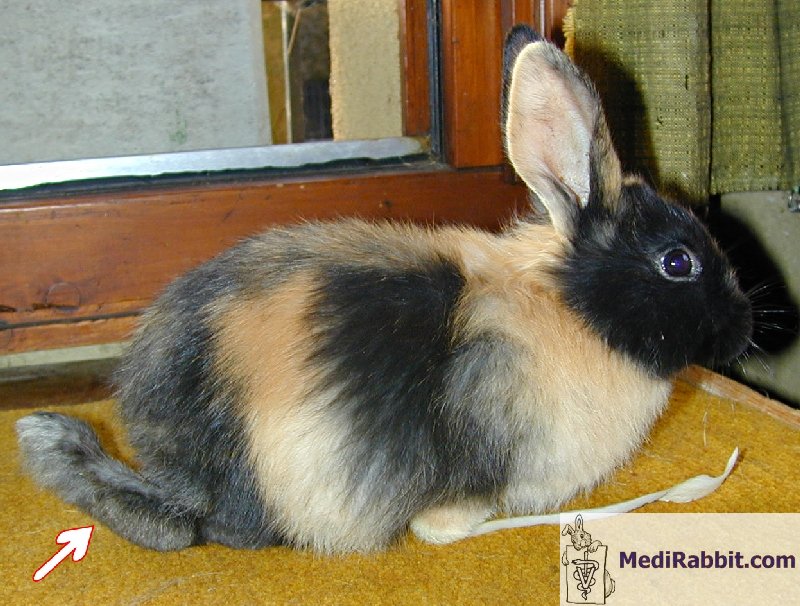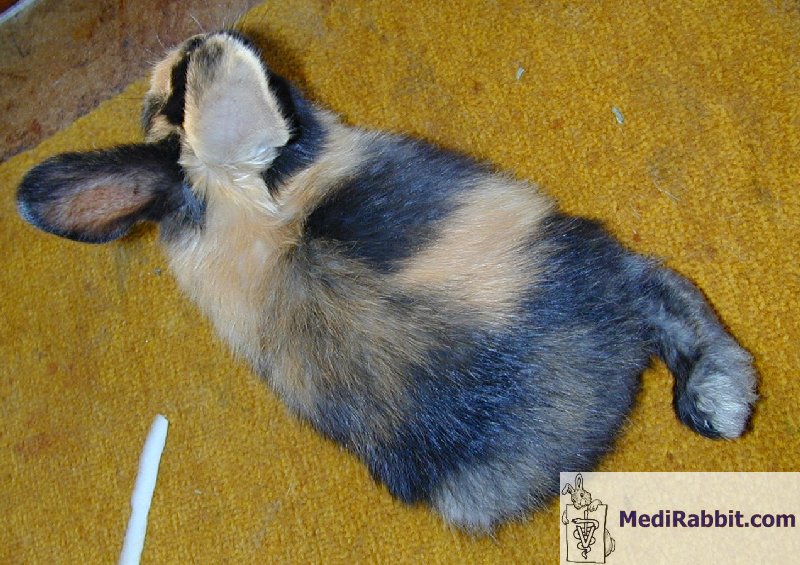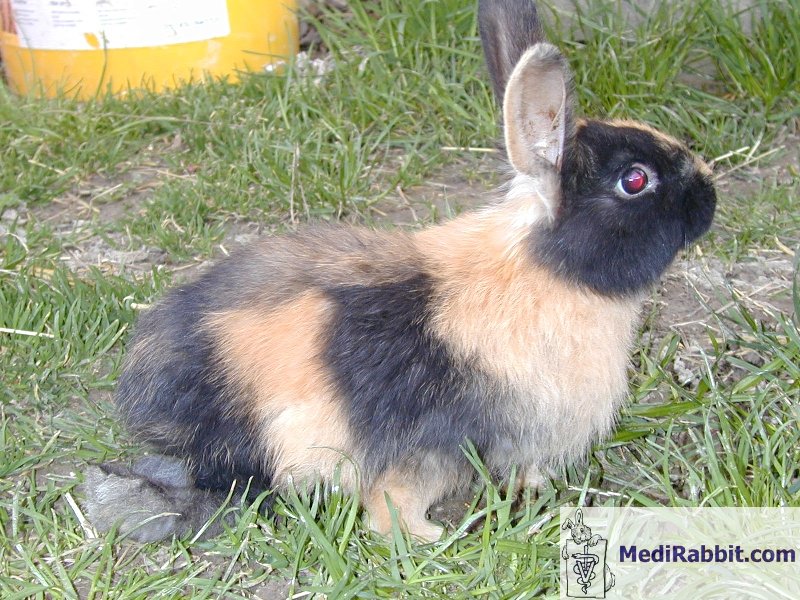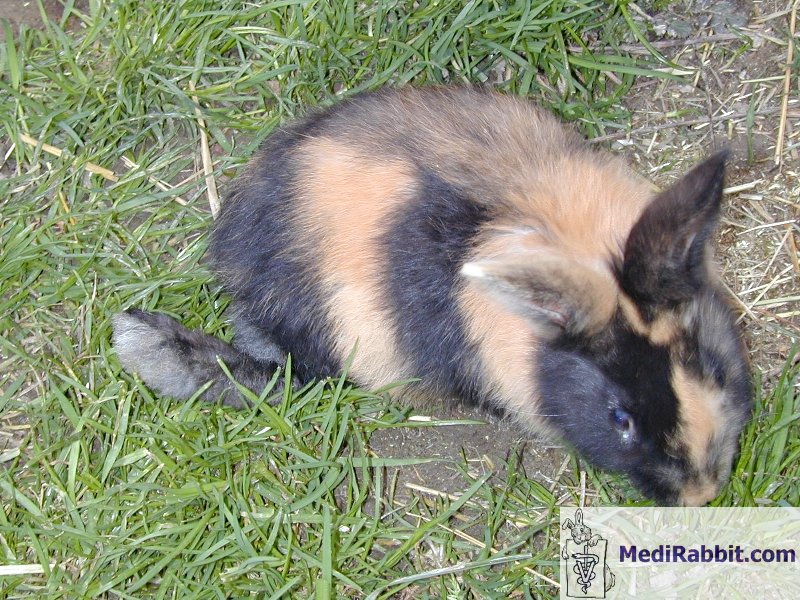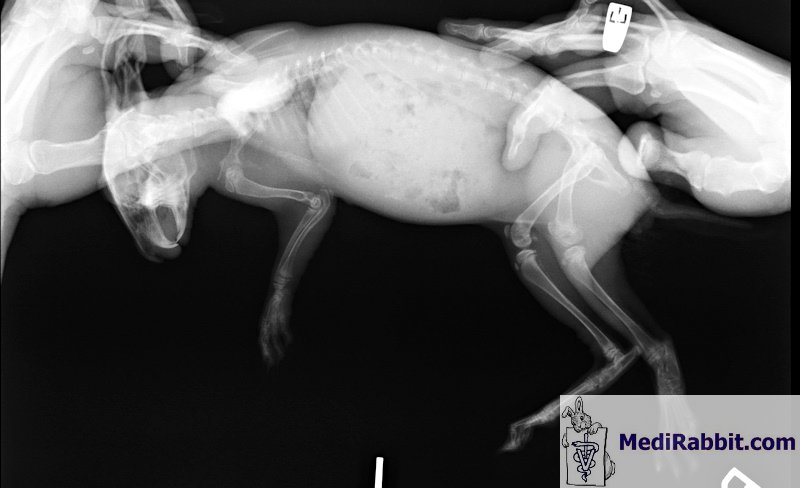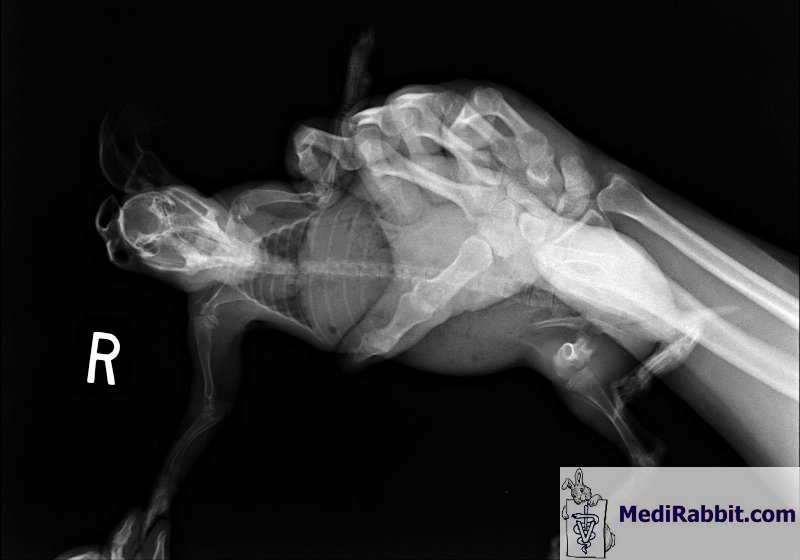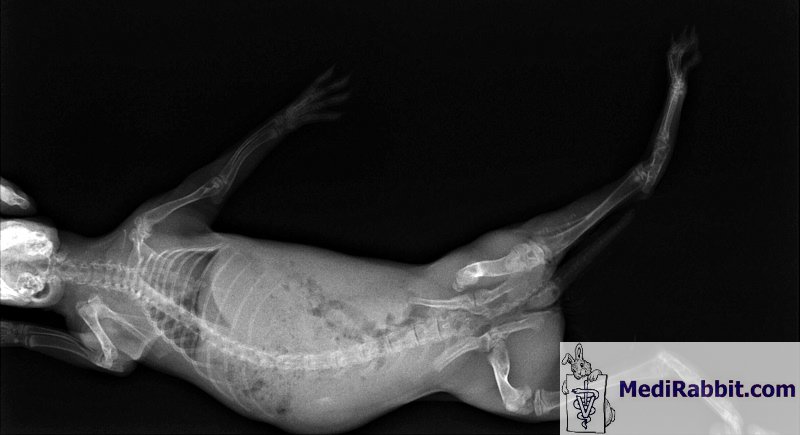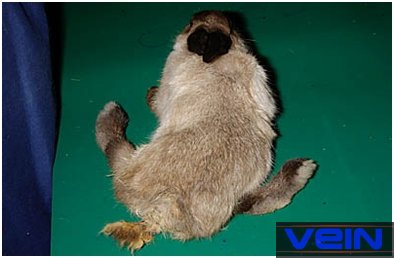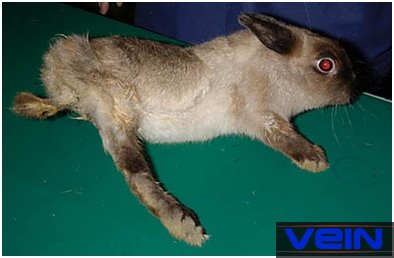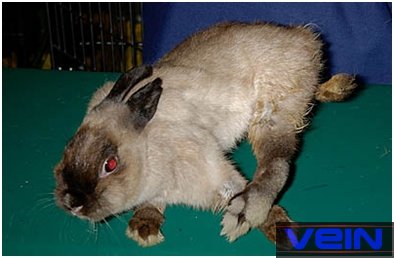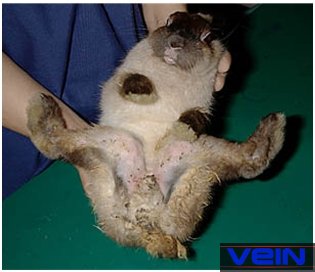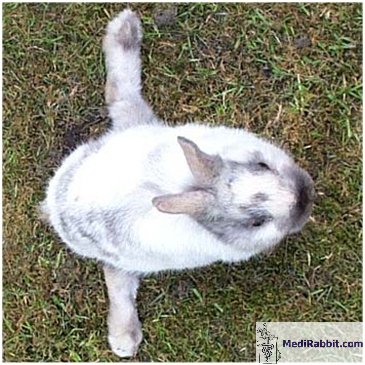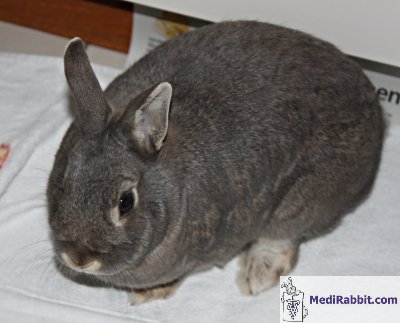Rabbits with a
congenital splay-leg
Esther van Praag Ph.D.
MediRabbit.com is funded solely by the
generosity of donors.
Every donation, no matter what
the size, is appreciated and will aid in the continuing research of medical care
and health of rabbits.
Thank you
|
Warning: this page contains
pictures that may be distressing for some persons.
|
A rabbit suffering from this condition loses gradually the ability to adduct one to all four limbs. It can affect the fore- and/or hind limbs, which become twisted, so that the animal has a double-jointed posture. The rabbit can no more put weight on its limbs and ambulation becomes difficult due to the inability to adduct the limbs. The severity of the condition ranges from light to paralysis.
Video from Kim Chilson
Clinical signs
Rabbits affected by a congenital or traumatic
splay-leg eat and drink normally, and their health is good. The only clinical
signs are deformities at the shoulder and hip joints leading to a wrong
position of the limb, difficult ambulation, by wriggling along on its belly
or chest.
When a rabbit
is seen with splay-legs, the first steps should be to check for physical
deformities. X-rays
will expose skeletal deformities like: ·
pelvic
hypoplasia, with femoral luxation, ·
torsion
or subluxation of the hip, ·
femoral neck anteversion, ·
femoral shaft torsion, ·
distal foreleg curvature, ·
achondroplasia
(growth impairment) of the hip or shoulder joints, ·
syringomyelia
(chronic progressive disease, characterized by the appearance of fluid-filled
pockets in the spinal cord).
Treatment There is no treatment
for splay-leg, so each case should be evaluated on an individual basis.
Indeed, rabbits showing light deformities can move around quite well and thus
have a good quality of life. In other cases, amputation of the affected limb
may be considered. For rabbits severely affected by splay-leg, euthanasia may
be overweighed. Secondary
skin complications may develop, in areas that wear the body weight. Skin
ulceration (sore lesions) and pododermatis are most frequently observed.
Acknowledgement Thanks are
due to Michel Gruaz (Switzerland), Kate Jenkins
(Canada), Arie van Praag (Switzerland), Megan Matter (USA) and Akira
Yamanouchi (VEIN), for the gracious permission to use their pictures. Further information Arendar GM, Milch RA. Splay-leg -
a recessively inherited form of femoral neck anteversion,
femoral shaft torsion and subluxation of the hip in the laboratory lop rabbit:
its possible relationship to factors involved in so-called "congenital
dislocation" of the hip. Clin Orthop. 1966;44:221-9. Jirmanova I. The splayleg
disease: a form of congenital glucocorticoid myopathy? Vet Res Commun. 1983;6(2):91-101. Van Praag E.,
Maurer A., Saarony T. Skin diseases of Rabbit. Geneva, CH:
MediRabbit.com; 2010. |
||||||||||||||||||
e-mail: info@medirabbit.com



